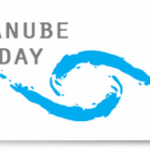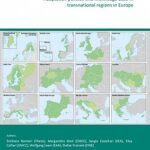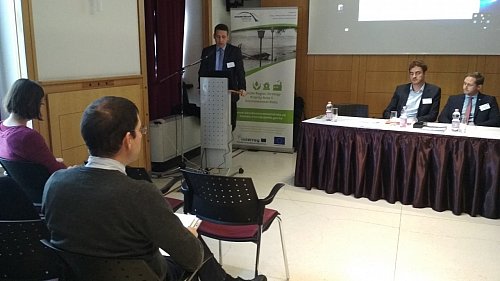EU LEVEL WORKSHOP ON HYDROMORPHOLOGY
The Hungarian national coordination of the EU Strategy for the Danube Region (EUSDR) Priority Area 5 Environmental risks jointly with the Directorate General for Water Management of Hungary hosted the Workshop on hydro-morphological measures under the Floods and Water Framework Directives on 4-5 December 2018 in Budapest. The participants of the event arrived from water, biodiversity and flood management agencies from all over Europe.
Mr Viktor Oroszi, PhD, Head of Danube Region Strategy Division for the Ministry of Foreign Affairs and Trade from Hungary opened the event with a welcome speech, where he highlighted the importance of strengthening the cooperation at a macro-regional level. As he mentioned, the EU Strategy for the Danube Region have two water related priority areas (water quality and environmental risks), both of them co-coordinated by Hungary. Therefore they work in close cooperation with the International Commission for the Protection of the Danube River (ICPDR) and share the responsibility for the realization of the targets. Besides, their most significant activity in the field of environmental risks is to facilitate the flood protection of the Region and to enhance the flood safety of the whole basin.
 The improvement of flood forecasting data exchange started with EUSDR facilitation in the framework of the DAREFFORT project, led by Hungarian partner. To improve water and sediment management as well as the morphology of the Danube River the Danube Sediment project team begun collecting sediment transport data in the Danube River under the leadership of the Budapest University of Technology. This data provides the foundation for a Danube-wide sediment balance that will analyse the sinks, sources and redistribution of sediment and their impacts. A main project result will be the first “Danube Sediment Management Guidance” (DSMG). The Danube Floodplain project – led by Romanian colleagues – support wetland and floodplain restoration as an effective mean of enhancing flood protection, and more generally to analyse and identify the best response to flood risk (including “green infrastructure”).
The improvement of flood forecasting data exchange started with EUSDR facilitation in the framework of the DAREFFORT project, led by Hungarian partner. To improve water and sediment management as well as the morphology of the Danube River the Danube Sediment project team begun collecting sediment transport data in the Danube River under the leadership of the Budapest University of Technology. This data provides the foundation for a Danube-wide sediment balance that will analyse the sinks, sources and redistribution of sediment and their impacts. A main project result will be the first “Danube Sediment Management Guidance” (DSMG). The Danube Floodplain project – led by Romanian colleagues – support wetland and floodplain restoration as an effective mean of enhancing flood protection, and more generally to analyse and identify the best response to flood risk (including “green infrastructure”).
 Raimund Mair and Ioannis Kavvadas from the European Commission presented the 3 aims of the workshop. By active participation of the experts, they initiated exchange on: 1) restoration and mitigation measures to achieve Water Framework Directive objectives at water bodies impacted by existing flood risk measures; 2) impacts of new flood protection measures on hydromorphology and related Water Framework Directive assessments; 3) role of sediment management strategies as a mean to achieve the objectives of both directives.
Raimund Mair and Ioannis Kavvadas from the European Commission presented the 3 aims of the workshop. By active participation of the experts, they initiated exchange on: 1) restoration and mitigation measures to achieve Water Framework Directive objectives at water bodies impacted by existing flood risk measures; 2) impacts of new flood protection measures on hydromorphology and related Water Framework Directive assessments; 3) role of sediment management strategies as a mean to achieve the objectives of both directives.
In order to support the discussions, Flood Directive objectives, EU policies case studies from the Netherlands and Spain were shared. At a later stage the experts separated into three working groups to exchange ideas and thoughts about specific questions related to the aims of the workshop. The results of the group works will be available in a form of a report and serve as basis for further discussions.
Click here to download the presentations.





